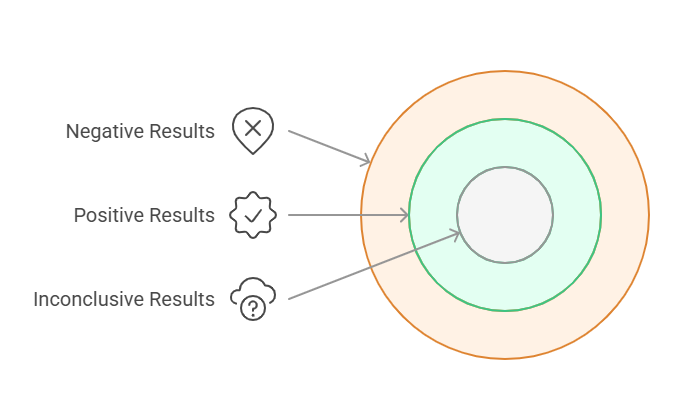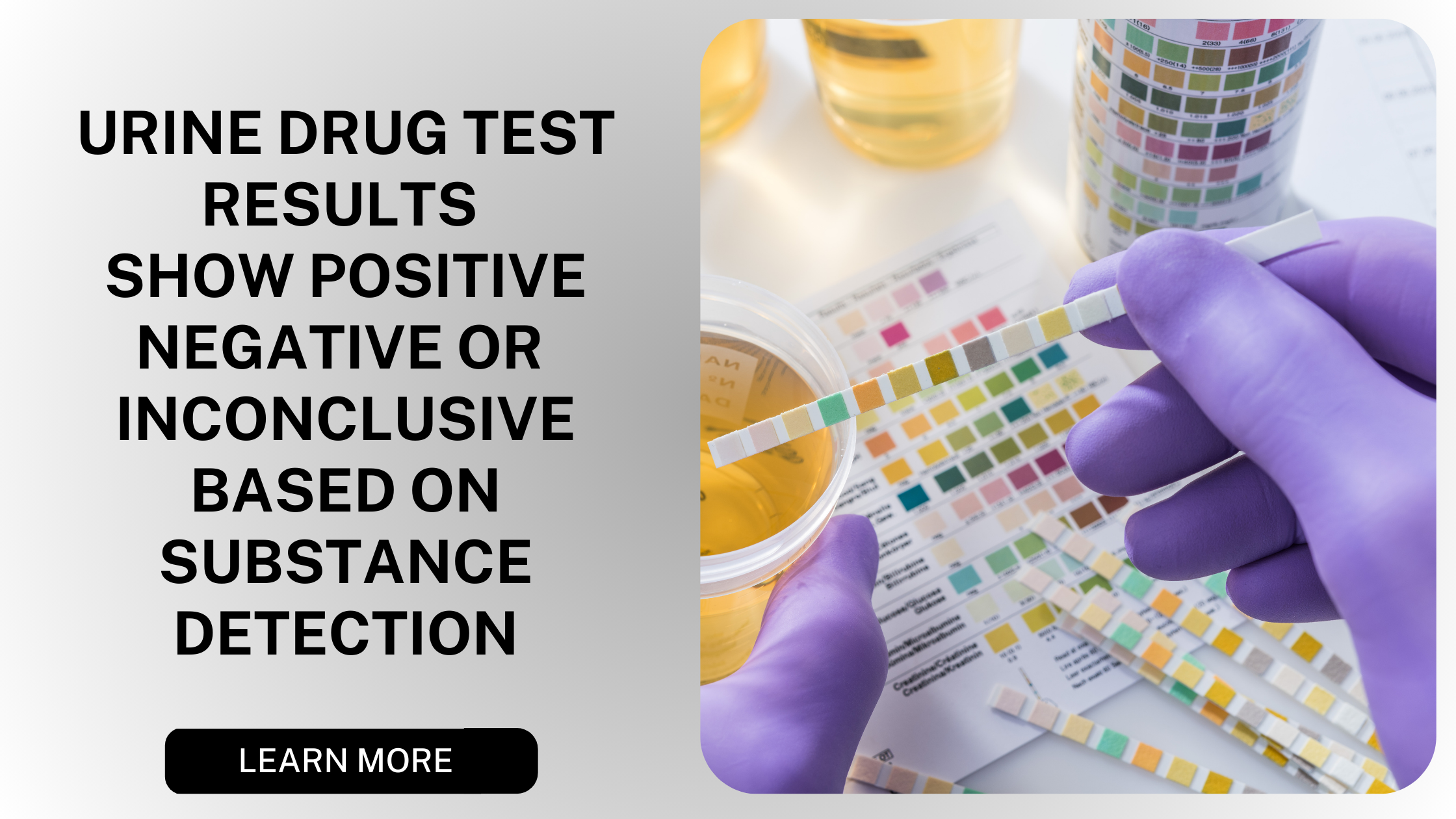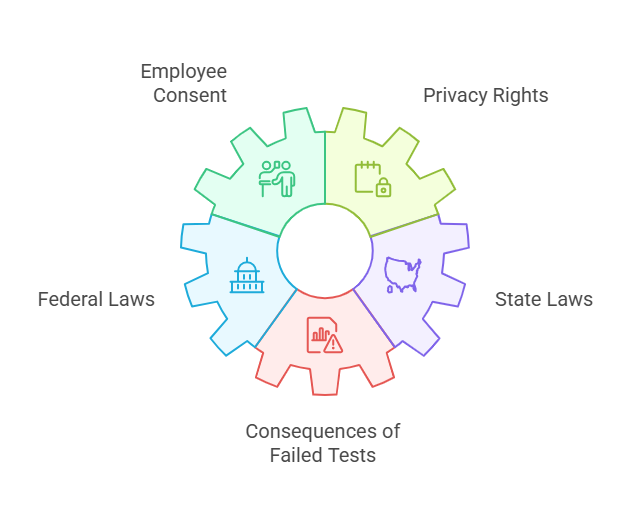Introduction to Urine Drug Tests and Understanding the Results
Urine drug tests have become a standard method for detecting substance use across various sectors, including workplaces, healthcare environments, and legal proceedings. This non-invasive testing method is widely used due to its cost-effectiveness and ability to detect a broad range of substances, from illegal drugs to prescription medications. Understanding urine drug tests and their results is crucial for employers, healthcare providers, and individuals who may be subjected to them. This section will break down the essential components of urine drug tests, how they work, the substances commonly tested for, and how the results are interpreted.
What is a Urine Drug Test?
A urine drug test involves analyzing a sample of urine to detect the presence of specific drugs or their metabolites. Metabolites are byproducts produced when the body processes and eliminates a substance. The primary objective of the test is to detect these metabolites in the urine, which indicate recent drug use. Urine drug tests are frequently used in workplaces for pre-employment screening, random testing, and post-incident testing. They are also common in healthcare for monitoring drug usage or in legal settings for individuals on probation or involved in legal cases.
Why Do Employers, Healthcare Providers, and Law Enforcement Conduct Urine Drug Tests?
Employers
Employers use urine drug tests as part of their hiring process to ensure that candidates are free from substances that could impair their job performance. Drug testing is especially critical for jobs that involve operating heavy machinery, driving, or other safety-sensitive positions where impairment could lead to accidents or harm. Employers also conduct random drug tests on current employees to maintain a drug-free workplace and ensure ongoing safety.
Moreover, pre-employment drug testing can help reduce the risk of negligent hiring. By screening potential employees, employers can ensure they are hiring individuals who will adhere to the company’s policies and contribute to a safe and productive work environment.
Healthcare Providers

In healthcare, urine drug tests may be performed to monitor patients who are undergoing treatment for substance abuse or individuals who may be at risk of abusing drugs due to prescribed medications. Healthcare providers may also use these tests to confirm that a patient is taking their prescribed medications as directed or to check for potential drug interactions.
Law Enforcement
Urine drug tests are also widely used by law enforcement, especially in cases involving suspected drug use. For example, after a traffic accident or DUI (Driving Under the Influence) arrest, law enforcement may administer a urine drug test to determine if the individual was under the influence of drugs at the time of the incident. Additionally, urine tests are used in legal proceedings, such as probation drug testing, to monitor compliance with drug-free conditions.
How Urine Drug Tests Work
The process of a urine drug test is relatively simple and non-invasive. An individual is typically asked to provide a urine sample, which is then sent to a laboratory for testing. The test works by detecting the presence of specific drugs or their metabolites in the urine. Most drug tests are designed to detect a range of commonly abused substances, including marijuana, cocaine, opioids, amphetamines, and benzodiazepines.
The test starts with an initial screening process, often done through an immunoassay method. This screening is designed to quickly identify any drugs or metabolites that exceed the threshold concentration. If the initial screening test returns positive, a more accurate confirmatory test, such as Gas Chromatography-Mass Spectrometry (GC-MS), may be performed to verify the results.
The key to understanding how the test works lies in the concept of “cutoff levels.” These are predetermined levels of drug metabolites that determine whether the test is considered positive or negative. Cutoff levels are set based on the substance being tested and are designed to avoid false positives. If the concentration of a substance in the urine is above the cutoff level, the result is deemed positive. Conversely, if the concentration is below the cutoff, the result is negative.
Types of Substances Tested in Urine Drug Tests
Urine drug tests are designed to detect a wide range of substances, with the most common ones being:

1. Marijuana (THC)
Marijuana remains one of the most commonly tested substances in urine drug tests. Tetrahydrocannabinol (THC), the active compound in marijuana, can remain detectable in the urine for varying lengths of time depending on the individual’s usage habits. For infrequent users, THC may be detectable for a few days, while for regular users, it can be detected for several weeks.
2. Cocaine
Cocaine use is typically detectable in urine for 2 to 4 days after use. However, for heavy or chronic users, cocaine may be detectable for a longer period. Cocaine is a stimulant that can cause severe health problems, and its use is banned in most employment settings.
3. Opiates
Opiates, such as heroin, morphine, and codeine, are often included in urine drug tests due to their potential for abuse and addiction. Opiates are typically detectable in urine for 2 to 4 days, but chronic users may test positive for longer periods.
4. Amphetamines
Amphetamines, including methamphetamine, ecstasy, and prescription medications like Adderall, are commonly tested for in urine drug screenings. Amphetamines can stay in the urine for 1 to 3 days, though extended use may result in detection for up to a week.
5. Benzodiazepines
Benzodiazepines, such as Xanax, Valium, and Ativan, are prescribed for anxiety, insomnia, and other conditions. These substances can be detected in urine for several days to weeks, depending on the type of benzodiazepine and the individual’s metabolism.
6. Barbiturates
Barbiturates, which are sedative drugs, are less commonly tested for today but can still be included in urine drug screenings. They can be detectable in the urine for 1 to 3 days, but long-acting barbiturates may stay in the system for up to 2 weeks.
7. Other Drugs
Some urine drug tests may also screen for other substances, such as phencyclidine (PCP), synthetic drugs, and performance-enhancing drugs. These substances are less commonly tested but may be included in specific tests for law enforcement or certain high-risk employment situations.
How Long Do Drugs Stay in the System?
The detection window for drugs in urine depends on several factors, including the type of drug, frequency of use, metabolism, and body composition. For occasional users, drugs typically stay in the system for a shorter period, while frequent or heavy users may have substances detectable for longer durations. Below is a general guide to the detection windows for common substances:
| Substance | Detection Window |
|---|---|
| Marijuana (THC) | 1-30 days |
| Cocaine | 2-4 days |
| Opiates | 2-4 days |
| Amphetamines | 1-3 days |
| Benzodiazepines | 3-6 days |
| Barbiturates | 1-3 days |
| PCP | 1-8 days |
It is important to note that the above are general guidelines, and the detection window can vary based on individual factors like metabolism, hydration, and the specific drug formulation.
Collection Process and Administration
The collection of a urine sample for drug testing is a relatively straightforward process. The person being tested is typically asked to provide a urine sample in a clean, private setting, and the sample is then sealed and sent to a laboratory for analysis. To ensure the integrity of the sample and prevent tampering, many testing facilities supervise the collection process. This helps ensure that the sample is not diluted or altered in any way.
In some cases, particularly in workplace settings, employees may be required to submit a sample under observation to ensure the sample’s authenticity. Testing facilities also adhere to strict chain-of-custody procedures to guarantee that the sample has not been tampered with or replaced after collection.
Interpreting Urine Drug Test Results: Negative, Positive, and Inconclusive Results

Urine drug test results typically fall into one of three categories: negative, positive, or inconclusive.
1. Negative Results
A negative result indicates that no drugs or metabolites were detected in the urine sample. This is the desired outcome in most cases, indicating that the person being tested has not used the substances for which the test is screening. However, it is important to note that a negative result does not necessarily guarantee that the person is drug-free, as certain factors like diluted urine or the use of certain medications may affect the outcome.
2. Positive Results
A positive result means that drugs or their metabolites have been detected above the cutoff level. However, a positive result on an initial screening test is not conclusive. Further confirmatory testing, such as GC-MS, is often needed to verify the result. Common causes for false positives include cross-reactivity with other substances, such as certain over-the-counter medications or foods.
3. Inconclusive Results
An inconclusive result means that the test could not determine the presence or absence of drugs in the sample. This could be due to insufficient urine, errors in the collection process, or issues with the test equipment. In these cases, retesting may be required.
Understanding How Urine Drug Test Results are Interpreted
When a urine drug test is conducted, the results are analyzed to determine whether any of the substances tested for are present in the sample. To ensure accurate and consistent results, urine drug tests rely on a series of cut-off levels, which are thresholds that indicate whether a substance is present in sufficient quantities to be detected. The interpretation of these results involves evaluating whether the drug concentrations exceed these cut-off levels.
Urine drug tests typically begin with a screening process, using methods such as immunoassay to detect specific drugs or metabolites. If the initial test produces a positive result, further confirmatory testing, such as Gas Chromatography-Mass Spectrometry (GC-MS), is performed to validate the result. The process and interpretation of test results are crucial for employers, healthcare professionals, and individuals being tested. Here, we explore the factors that affect the interpretation of urine drug test results, how false positives and negatives can arise, and the process of confirmatory testing.
Factors Affecting Urine Drug Test Results
Several factors can influence the results of a urine drug test, including the following:
1. Cut-Off Levels
Cut-off levels are pre-established thresholds that indicate whether a drug or its metabolite is present in significant amounts to be detected in the urine. These cut-off levels are set by regulatory agencies such as the Substance Abuse and Mental Health Services Administration (SAMHSA) and vary based on the drug being tested. If the concentration of a drug is above the cut-off level, the result is considered positive. If it is below the threshold, the result is negative.
2. False Positives
A false positive occurs when a urine drug test incorrectly detects the presence of a drug that is not actually present. This can happen due to a variety of factors, including the following:
- Cross-reactivity with Other Substances: Certain over-the-counter medications, foods, or even supplements can cause cross-reactivity in the test, leading to a false positive. For example, consuming poppy seeds may result in a false positive for opiates due to the trace amounts of morphine they contain.
- Medications: Some prescription and non-prescription drugs may cause a false positive. For example, certain antibiotics, cold medications, or antidepressants can cause a urine drug test to show a positive result for other substances like amphetamines or benzodiazepines.
- Contamination: If the urine sample is contaminated during collection, it may lead to inaccurate results, including false positives.
3. False Negatives
A false negative occurs when a urine drug test fails to detect a drug that is actually present in the system. This can happen due to several reasons:
- Dilution of Urine: If an individual drinks excessive amounts of water or uses a substance to dilute their urine prior to the test, it can result in a false negative, as the concentration of drugs in the urine may fall below the detectable threshold.
- Timing of the Test: If the test is taken too soon after drug use or too late after use, the drug may not be detectable at the time of the test, especially if the person has a fast metabolism or the substance has already been eliminated from the body.
- Health Conditions: Certain medical conditions, such as kidney disease or diabetes, can affect how the body processes and eliminates drugs, potentially leading to a false negative result.
4. Confirmatory Testing
When an initial screening test returns a positive result, confirmatory testing is performed to ensure the accuracy of the results. One of the most common methods of confirmatory testing is Gas Chromatography-Mass Spectrometry (GC-MS), which is a highly sensitive and specific technique that separates and identifies chemical substances in the urine sample.
Confirmatory tests are crucial for minimizing the risk of false positives and ensuring that the results are reliable. A GC-MS test provides a more accurate measurement of the substances present in the urine and is often used to verify the presence of drugs that were initially flagged in the screening test.
Substances Tested in Urine Drug Tests
Urine drug tests can detect a variety of substances, including illicit drugs, prescription medications, and over-the-counter drugs. Below is a breakdown of common substances tested for, their detection windows, and the typical cutoff levels for each.
| Substance | Detection Window | Cutoff Level |
|---|---|---|
| Marijuana (THC) | 1-30 days | 50 ng/mL |
| Cocaine | 2-4 days | 150 ng/mL |
| Opiates | 2-4 days | 2000 ng/mL |
| Amphetamines | 1-3 days | 500 ng/mL |
| Benzodiazepines | 3-6 days | 200 ng/mL |
| Barbiturates | 1-3 days | 200 ng/mL |
| PCP | 1-8 days | 25 ng/mL |
| Methamphetamine | 2-4 days | 500 ng/mL |
| Ecstasy (MDMA) | 1-3 days | 500 ng/mL |
| Synthetic Cannabinoids | 1-3 days | 50 ng/mL |
Note: Detection windows can vary based on factors such as frequency of use, metabolism, and body composition. The cut-off levels listed here are general guidelines and may vary depending on the laboratory conducting the test.
Factors That Can Influence Urine Drug Test Results
Several personal factors can influence the outcome of a urine drug test, including the following:
1. Hydration
Hydration levels can affect the concentration of drugs in the urine. Overhydration can lead to diluted urine, which may result in a false negative. On the other hand, dehydration may cause higher concentrations of drugs to be detected, potentially leading to a false positive. It’s important to balance hydration to avoid skewing the results.
2. Medications
Certain medications, both prescription and over-the-counter, can interfere with urine drug tests. For example, antibiotics like amoxicillin or certain antihistamines may cause false positives for drugs like amphetamines or benzodiazepines. It is essential for individuals to inform the testing agency about any medications they are taking to avoid confusion or inaccuracies in the results.
3. Health Conditions
Underlying health conditions, such as liver or kidney diseases, can impact the way the body processes and eliminates drugs. People with compromised kidney function may have drugs in their system for longer periods, while those with liver issues may have difficulty metabolizing certain substances. These health factors can alter the results of the drug test, leading to inaccurate conclusions.
4. Body Composition
Body fat and muscle mass can also play a role in how long a drug stays in the system. Drugs like marijuana are fat-soluble and may be stored in fat cells for longer periods, especially in individuals with higher body fat percentages. Conversely, individuals with higher muscle mass may metabolize drugs more quickly, reducing the detection window.
Role of RapidHire Solutions in Interpreting Urine Drug Test Results
RapidHireSolutions is a trusted provider of background check and drug testing services. They help employers navigate the complexities of urine drug testing by offering pre-employment drug screening, random drug testing, and post-incident testing services.
By partnering with RapidHireSolutions, employers can streamline the testing process, ensure compliance with local laws, and obtain accurate results. The company’s expertise in interpreting urine drug test results helps ensure that employers make informed decisions when it comes to managing their workforce and maintaining a drug-free environment. Their services include providing guidance on the interpretation of results, handling potential disputes, and supporting employers in maintaining a legally compliant drug testing program.


